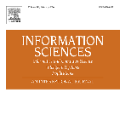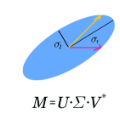The Petz recovery channel plays an important role in quantum information science as an operation that approximately reverses the effect of a quantum channel. The pretty good measurement is a special case of the Petz recovery channel, and it allows for near-optimal state discrimination. A hurdle to the experimental realization of these vaunted theoretical tools is the lack of a systematic and efficient method to implement them. This paper sets out to rectify this lack: using the recently developed tools of quantum singular value transformation and oblivious amplitude amplification, we provide a quantum algorithm to implement the Petz recovery channel when given the ability to perform the channel that one wishes to reverse. Moreover, we prove that, in some sense, our quantum algorithm's usage of the channel implementation cannot be improved by more than a quadratic factor. Our quantum algorithm also provides a procedure to perform pretty good measurements when given multiple copies of the states that one is trying to distinguish.
翻译:佩茨回收渠道在量子信息科学中扮演了重要角色,因为它几乎扭转了量子信道的效果。相当好的测量是佩茨回收渠道的一个特例,它允许近乎最佳的状态歧视。实验性地实现这些令人憎恶的理论工具的一个障碍是缺乏一个系统有效的方法来实施这些工具。本文旨在纠正这一缺陷:利用最近开发的量子单值转换和模糊放大工具,我们提供量子算法,在具备执行人们希望逆转的频道的能力时,实施佩茨回收渠道。此外,我们证明,从某种意义上讲,我们量子算法对频道的利用不能通过一个四面形因素来改进。我们的量子算法还提供了一个程序,在向人们提供多份试图区分的状态时,进行非常良好的测量。




